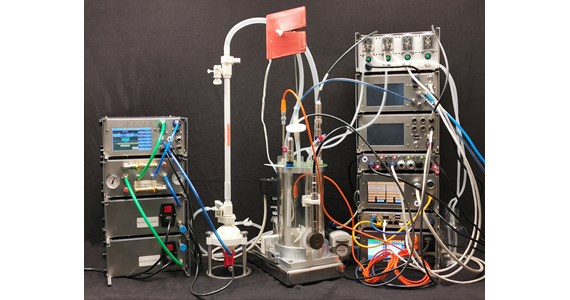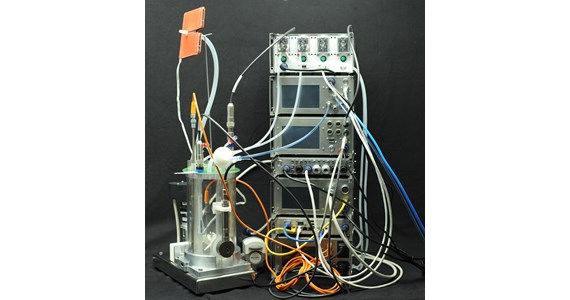Cronus-PCS is a configurable platform based on building block's
Cronus-PCS is a cluster of intelligent unit controllers for pharma and chemical industries. Cronus-PCS interfaces devices such as pumps, sensors, valves, agitators, heat units, MFC, aerators etc are all housed in standardized Hephaestus cabinets. The nature of the units is determined only by the complexity of the process to be controlled. The scalability of the Cronus-PCS system allow the user to mix and match units to suite a variety of process needs. Some unit controllers might operate as stand-alone units and some with unit-to-device integration. Other processes might require a PC as a master controller and the Lucullus or DeltaV software. For a better overview and more complex loops, sequencing, batching, recipe handling and CFR 21 compliant data acquisition.
2023 PerfuseCell and Cronus-PCS setup
2023 CerCell and Cronus-PCS setup
2024 Perfusecell Clotho+Harmonia
Photo on the left show a complete PerfuseCell setup with 3 liter P-SUB and the Clotho tower to the left for drive of the Thalia diaphragm Single-Use-Pump in a ATF setup and to the right the SUB controller. Centre photo show a setup with a 3.2 liter CellVessel operation in batch cultivation mode with a complete Cronus-PCS tower. Photo on the right side show a CellRetention 2 liter Vessel Volume P-SUB with a Thalia TM80 SUP hanging up-side-down with the HFF under the SUP direct coupled for ultra low dead volume.
The unit controllers features a web based setup tool, so that every integration into the Cronus-PCS system starts at the individual unit. The web interface enables the user to easily parameterize and commission the unit, to view live values, historical data and to configure native and 3rd party integration. The web front-end is 100% HTML 5.0 compliant so tablets (Windows) and smart phones (Android) will work as future interfaces as well.
An Ethernet based field-bus backbone integrates all units that forms the Cronus-PCS system. All units communicated via LAN (Local-Area-Network) - there is no need for Internet connection. The flexibility of the Ethernet will allow the user to stretch the process wide or keep it small and simple. Devices on the bus will automatically detect each other and suggest possible device-to-device or device-to-PCS integrations. For instance a temperature sensor device will automatically become a valid process input for a heat zone device.



